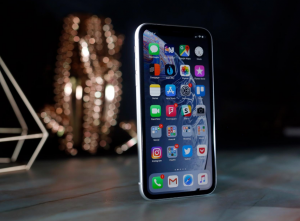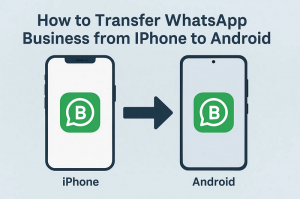Smartphones have become integral to modern life, offering a window to communication, information, and entertainment. However, for elderly users, navigating these devices can be challenging due to vision and hearing impairments, dexterity limitations, or cognitive decline.
It's a good thing phone makers have added plenty of options to help make their devices more accessible. Some settings and tools help seniors overcome barriers and experience all the impressive things their smartphones can do. It helps bridge that digital gap and empowers older people to use technology.
Enhancing Visual Accessibility: Seeing Clearly in a Digital World
Phone screens can sometimes be harsh on older eyes. However, you can make seeing what's on your smartphone easier by increasing the size of text and icons in your phone's settings.
Most phones also let you adjust the screen brightness. Cranking it up can help if you struggle to see in low light. You might also want to use your phone's "magnification" feature. That lets you zoom in on parts of the screen. It can make everything bigger, which may be nicer for the eyes.
Try those and see if they don't make using your phone a little more comfortable.
Larger text and display settings
Did you know that your smartphone has some handy settings to make the screen easier on your eyes? Most phones let you change font size, brightness, and contrast. On iPhones, go to Settings, select Accessibility, and then go to Display and Text Size.
You can increase the font there so everything is larger. For Android users, go to Settings, then Accessibility, and you'll see the Font Size option. Boosting that helps, too.
Don't forget that high-contrast modes are also great—they make the text and icons pop, making them easier to see.
Screen magnification
Most phones also have a handy feature for getting a closer look at parts of the screen. On iPhones, it's called Zoom. To turn it on, go to Settings, then Accessibility.
Android users, your phone calls it Magnification. Just go to Settings > Accessibility, and you'll find it there. Once you've enabled it, you can triple-tap the screen to zoom in on whatever you're looking at, making it much easier to see small details.
Voice control and assistants
Voice control has become helpful for people with limited vision. It allows them to operate their smartphones just by talking to them. One popular option is Siri on iPhones—just say "Hey Siri" or press the home button. There's Google Assistant on Android phones, which activates with "Hey Google" or by holding the home button.
But voice control can do much more than just help you get around your phone. You can use it to make and take calls, send texts, write emails - anything you'd typically touch the screen for. You can even use your voice to search online or control smart home devices around your house.
Improving Hearing Accessibility: The Sound of Connection
Smartphones have some great features that can help improve audio clarity.
First, get a phone that works with hearing aids. Look for ones rated M3/T3 or M4/T4—that means they're compatible with most hearing aids. This allows the sound to transmit clearly from your phone straight to your hearing aids with less background noise getting in the way.
Phones also let you boost the volume however loud you need. You can also adjust the sound settings to your liking. Things like noise reduction can filter out distracting sounds so your voice comes through crisper. Phones may even have custom sound profiles for a more personalized listening experience.
Remember that some smartphones offer captioning options, too. This makes phone calls and video content way more accessible to follow along with. No more missing parts of conversations or being unable to enjoy shows and videos.
Addressing Dexterity and Cognitive Challenges: Simplifying the Experience
Smartphones offer features that make them more user-friendly for users with dexterity or cognitive limitations. Many devices have simplified interfaces and easy modes to help make them more accessible.
You can enable an accessible mode in phone display settings like the Samsung Galaxy. This mode simplifies the interface with larger icons and removes extra on-screen elements to reduce visual clutter. The simplified layouts and increased sizes make understanding and navigating easier for those with cognitive challenges.
Accessibility features like assistive touch and gesture controls also provide alternative ways to interact with the device. Assistive touch brings commonly used options to an on-screen menu, so you don't need precise touch input. You can find this in the accessibility settings on iPhones.
Gesture controls allow actions to be performed with simple taps or swipes instead of relying on physical buttons. For individuals with hand tremors or arthritis, these options help make using the phone a less frustrating experience by minimizing fine motor tasks.
Overall, the accessibility options in modern smartphones aim to create a more intuitive experience for those with limited dexterity or cognitive abilities.
Simplified interfaces, assistive touch menus, and gesture controls reduce reliance on small touches or complicated sequences, allowing more users to benefit from our phones' features and connectivity.
Additional Perks and Benefits for Seniors: Beyond Accessibility
The benefits of smartphones for seniors go beyond the basic accessibility features.
Smartphones can help seniors stay connected with loved ones. With a smartphone, it's easy for seniors to call or text family and friends whenever they want. They can also use video chat apps to have face-to-face conversations. This helps seniors feel less isolated, especially if they can't leave the house as quickly.
Smartphones offer entertainment options that can fight boredom. Seniors can listen to music, play games, read books, or watch videos on their phones. These distractions can improve mood and make free time more enjoyable.
The Internet also offers easy access to all kinds of information. Seniors can look up answers to questions, follow news and current events, check the weather, and more—all from their phones.
Many seniors live more independently with the help of a smartphone. Apps exist to schedule appointments, arrange transportation, track medication, and more, empowering seniors to manage their own care.
In an emergency, seniors always have a way to call for help since they carry their phones everywhere. Overall, smartphones give seniors valuable tools that can enhance their quality of life in their later years.
Unique mobile plans for seniors
Many providers have recognized that seniors often have different needs from other groups. They don't necessarily need all the latest smartphone features but want reliable communication at an affordable price.
A lot of companies now offer plans tailored specifically for seniors. They'll have lower monthly costs and more straightforward options without all the bells and whistles. However, the tradeoff is that seniors get larger allowances for the things they use, like call minutes or data.
A great example is Consumer Cellular. They have a unique partnership with AARP to provide plans for their members. Those plans cater to what seniors are looking for, such as unlimited calls to other AARP Consumer Cellular members so you can seamlessly stay in touch with friends and family who are also seniors.
What's also great is that Consumer Cellular has customer support representatives trained to assist seniors patiently. They understand that some seniors may be less tech-savvy and want representatives who can take the time to explain things. It helps provide peace of mind that there is someone to turn to with questions.
Overall, it's good to see companies recognizing that a one-size-fits-all approach doesn't work for an aging population. Tailoring plans and support for seniors enhance their mobile experience.
Emergency features
Smartphones are lifesavers in more ways than one. They keep us constantly connected to friends and family and have built-in handy emergency features.
Both iPhones and Android phones let you enable location tracking and SOS buttons, which can help you get help quickly if you ever find yourself in a scary situation. You can turn on the Emergency SOS setting on iPhones through your Settings. Just go to Settings, then Emergency SOS. Once it's on, you can call for help with a quick press of the power button five times.
Android users have similar options. In your phone's Settings, under Location, you'll see an option for Emergency Location Service. Turn that on, and if the worst happens, emergency responders can see exactly where you're located.
Features like these give seniors and their loved ones a lot of comfort, knowing help is only a button press away. Whether it's a medical emergency, accident, or anything else, just one tap and the authorities will know where you are. Enabling those emergency features is a brilliant idea—you never know when you might need them.
Social Connection and Entertainment
Phones also allow us to stay closely connected to the people we care about no matter where they are. Suppose a loved one lives across the country, but you can video call them anytime using FaceTime or Skype. It's great because they can see you, and you can see them—it's almost like you're in the same room!
Social media has been great for them, too. They're part of a whole group chat with all their friends, so they always know what's happening in each other's lives. It's great how smartphones let you stay in touch with friends from long ago and friends who feel like family.
On top of all that, there's just so much you can do for fun on a smartphone. You can constantly stream your favorite shows or discover new ones on Netflix and Hulu. When you want a break from TV, you can play a quick game or do a jigsaw puzzle on their tablets.

Bridging the Gap: A World of Opportunity Awaits
Smartphones today hold immense potential to enrich the lives of seniors. By embracing the available accessibility features, older adults can overcome challenges and unlock a new world of communication, information, and entertainment.
With the proper support and guidance, navigating these devices can become an enriching experience for seniors - fostering connection, promoting independence, and cultivating a strong sense of empowerment in this digital age.
Exploring accessibility features allows elderly individuals and caregivers to tame what were once scary smartphones and reveal the devices' ability to provide connection, information, and entertainment.
When seniors embrace these options with proper assistance, smartphones empower through communication, information access, and entertainment in a way that can enrich lives while supporting independence. Guidance makes navigation a gratifying process that strengthens bonds, autonomy, and power within our technology-centered society.






